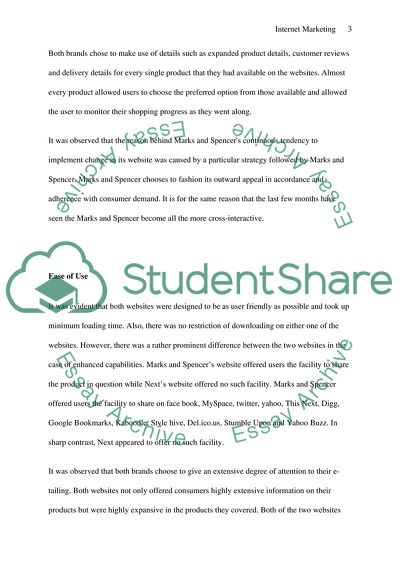Cite this document
(The Internet Presence of Marks & Spencer and Next Departmental Store Case Study, n.d.)
The Internet Presence of Marks & Spencer and Next Departmental Store Case Study. Retrieved from https://studentshare.org/marketing/1730840-report-which-compares-and-contrasts-on-pair-of-online-retailers-next-vs-marks-spencer
The Internet Presence of Marks & Spencer and Next Departmental Store Case Study. Retrieved from https://studentshare.org/marketing/1730840-report-which-compares-and-contrasts-on-pair-of-online-retailers-next-vs-marks-spencer
(The Internet Presence of Marks & Spencer and Next Departmental Store Case Study)
The Internet Presence of Marks & Spencer and Next Departmental Store Case Study. https://studentshare.org/marketing/1730840-report-which-compares-and-contrasts-on-pair-of-online-retailers-next-vs-marks-spencer.
The Internet Presence of Marks & Spencer and Next Departmental Store Case Study. https://studentshare.org/marketing/1730840-report-which-compares-and-contrasts-on-pair-of-online-retailers-next-vs-marks-spencer.
“The Internet Presence of Marks & Spencer and Next Departmental Store Case Study”, n.d. https://studentshare.org/marketing/1730840-report-which-compares-and-contrasts-on-pair-of-online-retailers-next-vs-marks-spencer.


